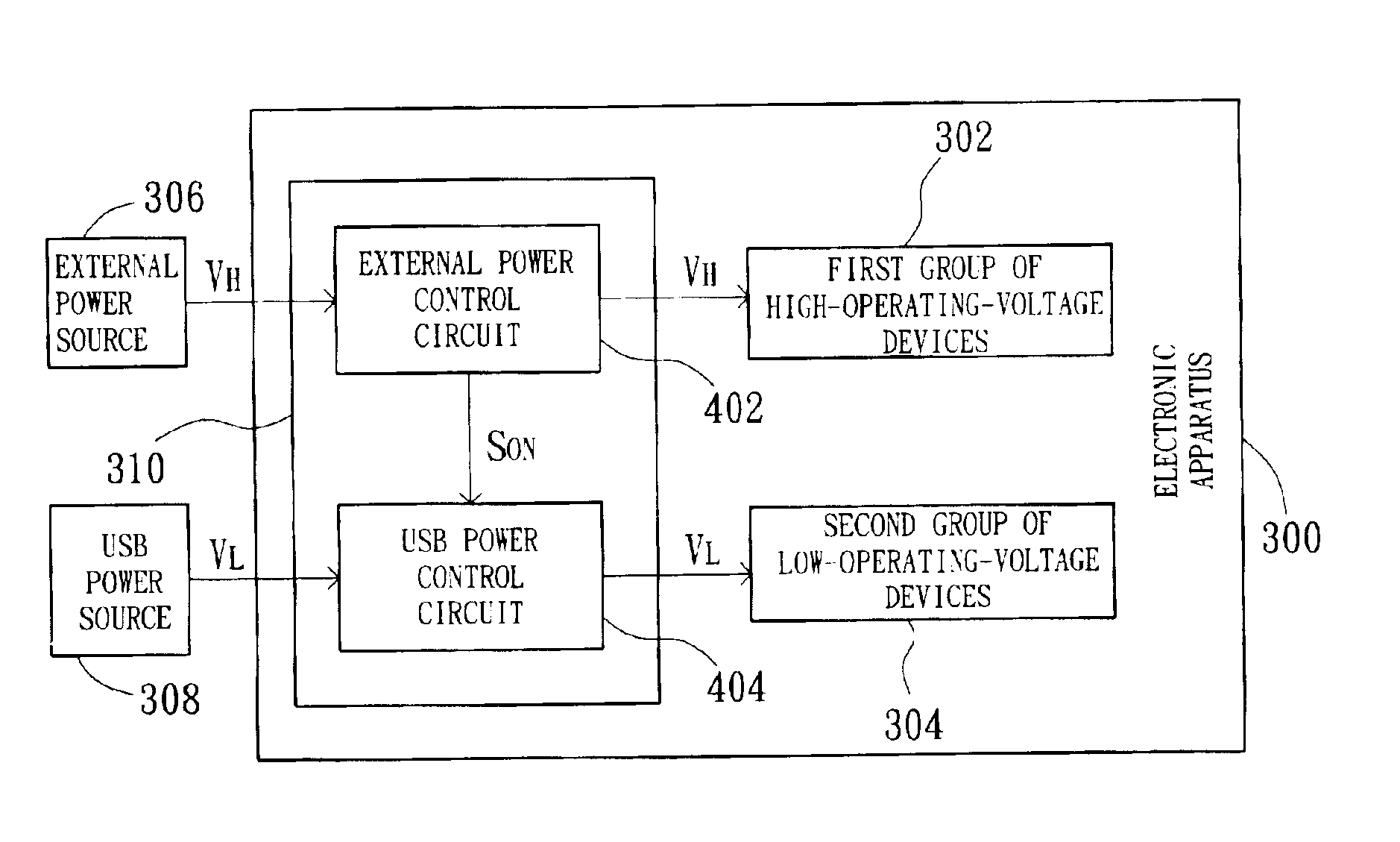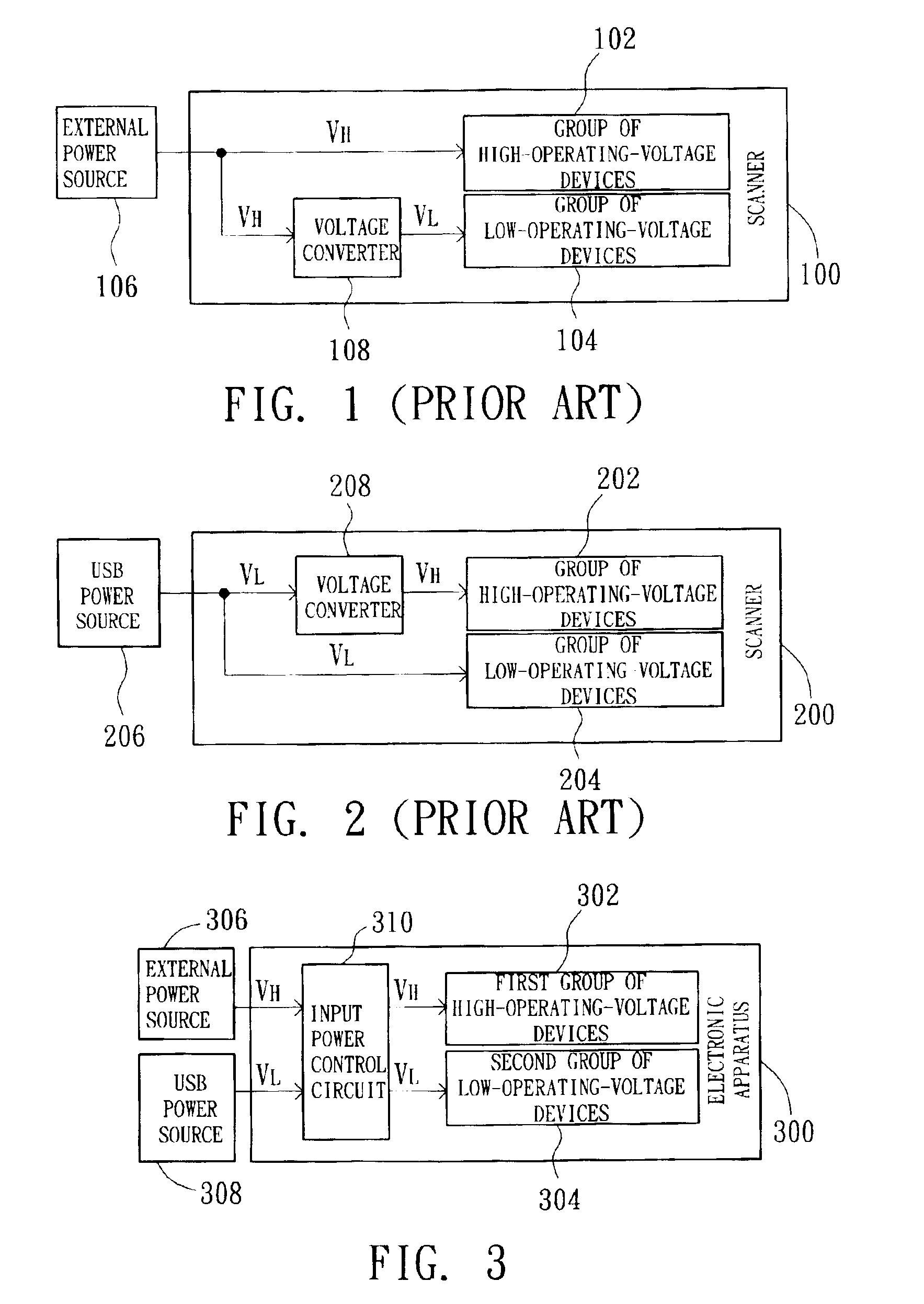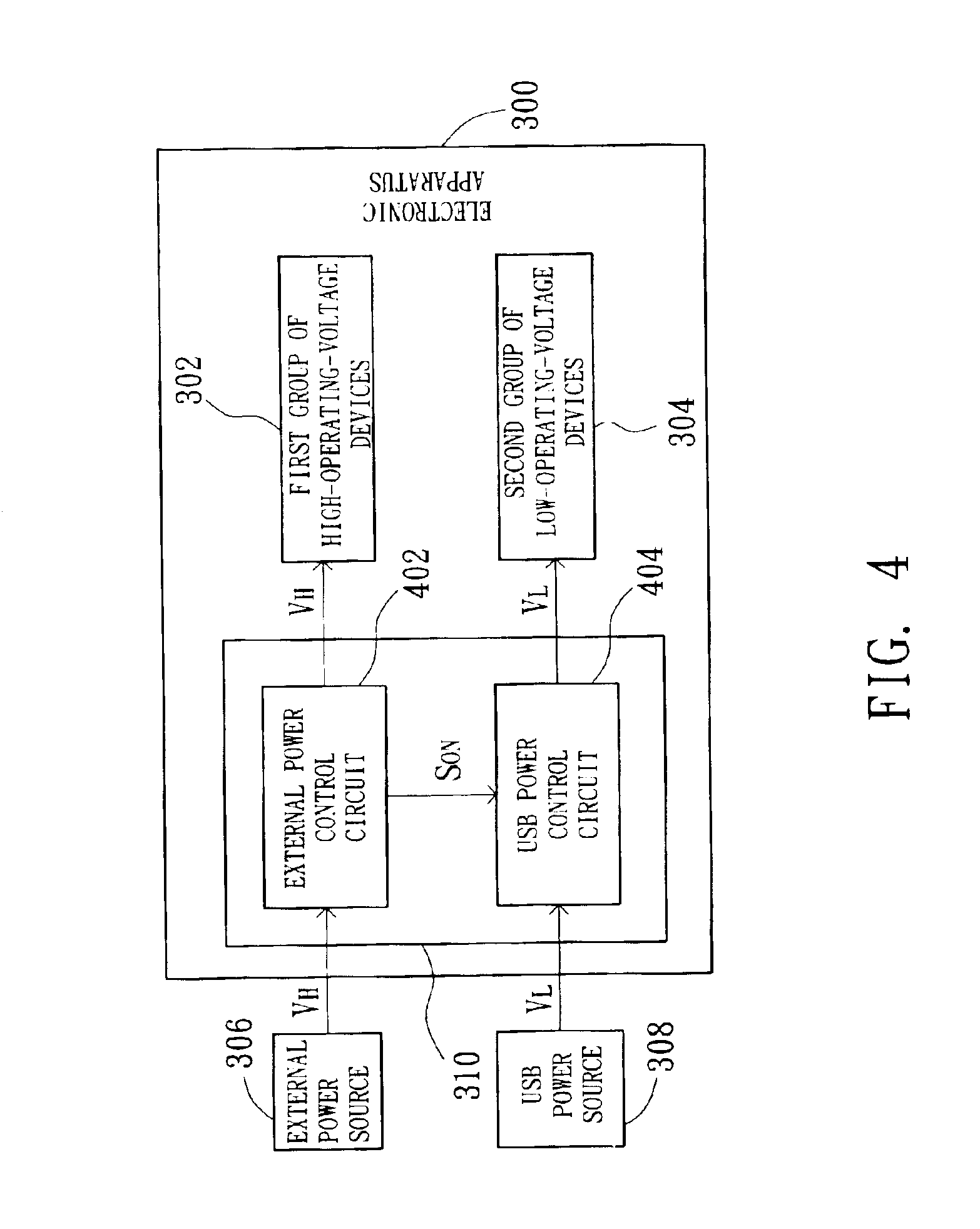Electronic apparatus capable of using an external power source and a bus power source simultaneously
- Summary
- Abstract
- Description
- Claims
- Application Information
AI Technical Summary
Benefits of technology
Problems solved by technology
Method used
Image
Examples
Embodiment Construction
[0019]The principle of the invention is that an electronic apparatus, such as a scanner, is simultaneously coupled to an external power source supplying a high operating voltage and a power source from a bus, such as a USB power source, supplying a low operating voltage. In addition, under the control of an input power control circuit, after the high operating voltage provided by the external power source is fed to the scanner, the low operating voltage provided by the USB power source is then fed to the scanner.
[0020]As shown in FIG. 3, an electronic apparatus, such as a scanner 300, capable of using an external power source 306 and a USB power source 308, according to one preferred embodiment of the invention, is connected to the external power source 306 and the USB power source 308. As described above, the scanner 300 includes two groups of devices: a first group of high-operating-voltage devices 302, directly or indirectly operative at 12 V DC, and a second group of low-operati...
PUM
 Login to View More
Login to View More Abstract
Description
Claims
Application Information
 Login to View More
Login to View More - R&D
- Intellectual Property
- Life Sciences
- Materials
- Tech Scout
- Unparalleled Data Quality
- Higher Quality Content
- 60% Fewer Hallucinations
Browse by: Latest US Patents, China's latest patents, Technical Efficacy Thesaurus, Application Domain, Technology Topic, Popular Technical Reports.
© 2025 PatSnap. All rights reserved.Legal|Privacy policy|Modern Slavery Act Transparency Statement|Sitemap|About US| Contact US: help@patsnap.com



